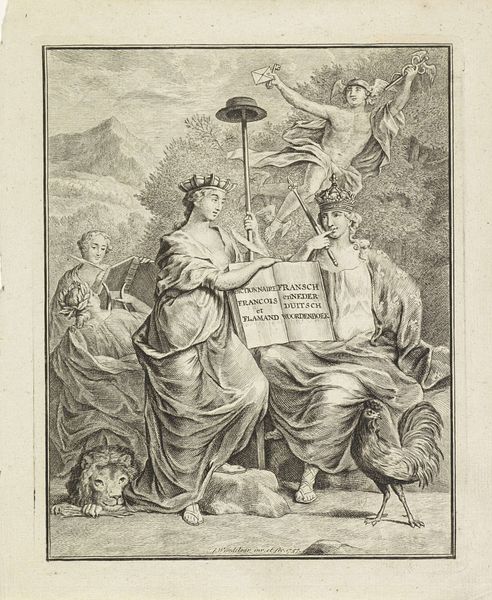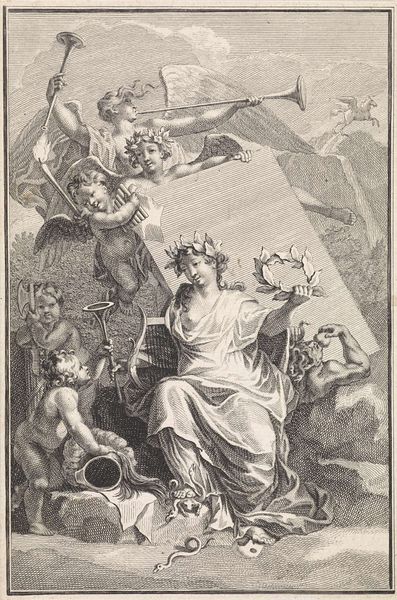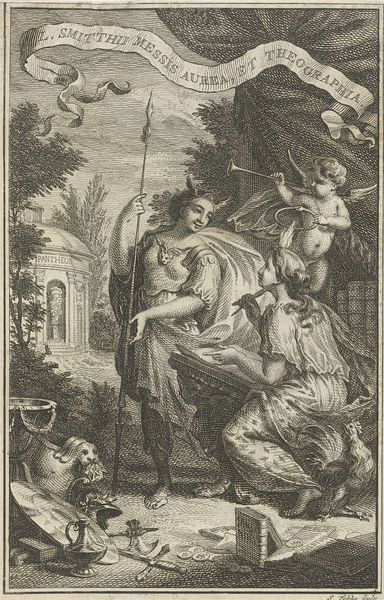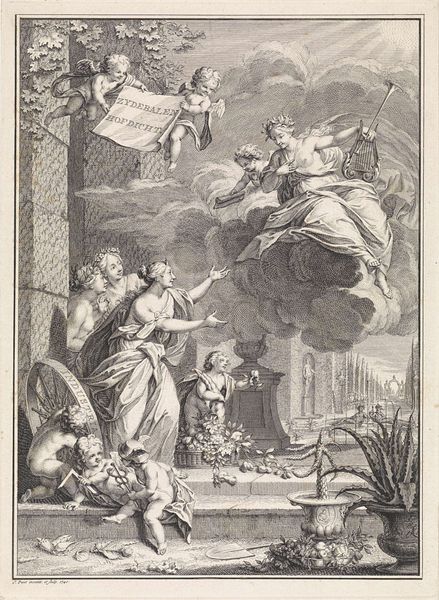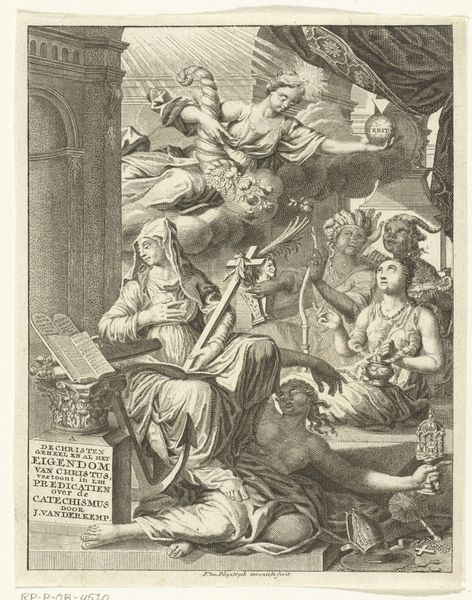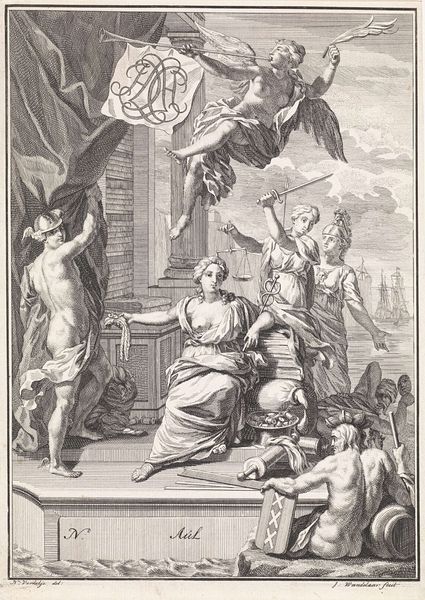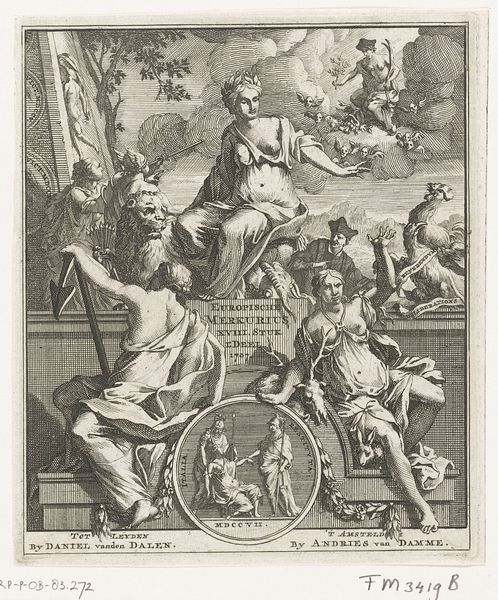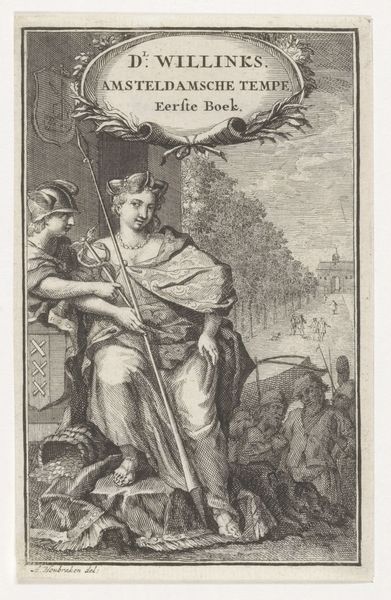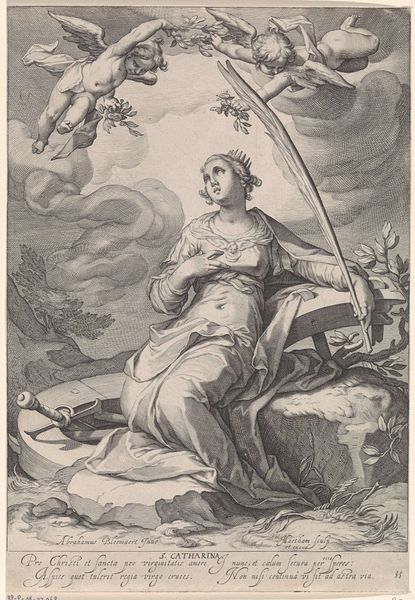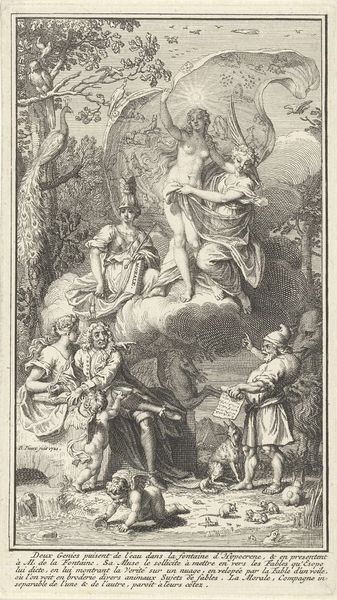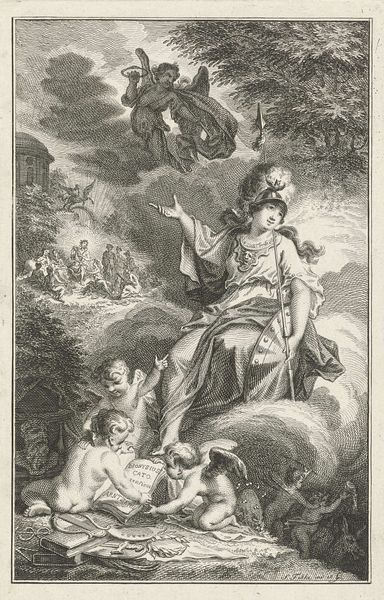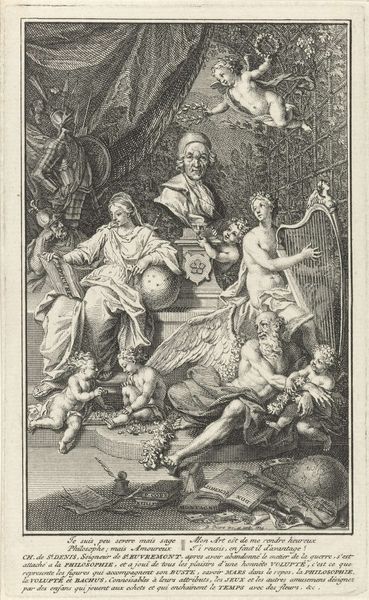
engraving
#
portrait
#
allegory
#
baroque
#
portrait drawing
#
history-painting
#
engraving
Dimensions: height 222 mm, width 177 mm
Copyright: Rijks Museum: Open Domain
Curator: This engraving by Jan Wandelaar, titled "Personifications of the Austrian Netherlands and France," dates to 1757. I am immediately struck by the delicate precision of the line work in rendering such varied textures. Editor: Yes, there’s an almost unsettling serenity to this piece. It’s clean, neat, and formal – almost stiff. And that gleaming starkness that you pick up in the engraving seems somehow loaded, heavy with the weight of its symbolism. Curator: Well, symbolism is definitely abundant here. We have two central female figures, allegorical representations of the Austrian Netherlands and France, uniting to share a large erudite dictionary of French, Flemish and Francois words. Note the lion and the rooster beside each woman that also symbolize the region each represents, as well as the crowned Mercury at the top with its symbols to denote commercial trade and safe roads, reflecting economic policies that are the real subject here. Editor: So, it is very much about presenting a certain public image of cross-border collaboration and harmony. How interesting that such care and detailed engraving are used to support specific politics in the service of international relations and, essentially, state power! What choices are being made and whose stories get foregrounded and others disappear in this depiction? Curator: Absolutely. The context of the engraving's creation is crucial here, the visual vocabulary really reflects power dynamics, and Wandelaar's skill is a tool that presents a specific idea in 1757. I think that is the ultimate goal and function for artwork such as this. I’d also suggest that if we could examine more engravings from Wandelaar's studio, we could probably construct a kind of micro-history of its networks. Editor: Examining those conditions of production is fascinating, especially when, as you mention, we look closely at what kind of claims of legitimacy that kind of material craftsmanship lends to the broader politics around it, and perhaps to which markets such fine detail catered. This piece makes me question how the production quality of political artwork throughout history reflects intended social impact and political will. Curator: The engraving provides us insights into both the artistry and the complex political atmosphere of the 18th century, showing what it means to construct and promote harmony through print media. Editor: Indeed, considering its layered social and material context provides a richer and perhaps more complicated narrative to what seems, at first glance, a simply presented alliance.
Comments
No comments
Be the first to comment and join the conversation on the ultimate creative platform.
